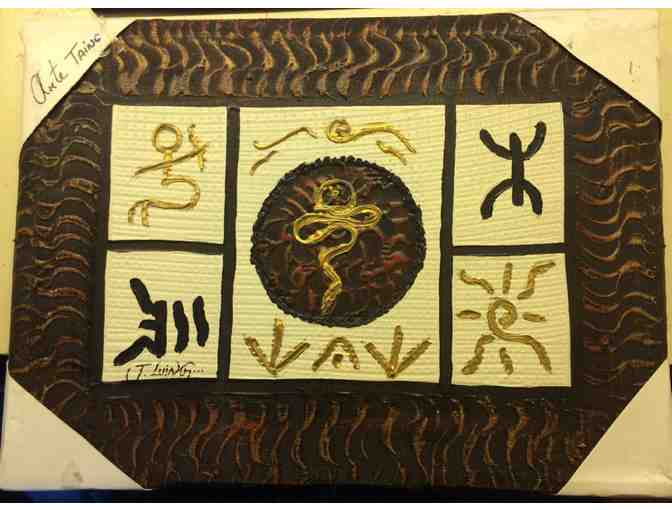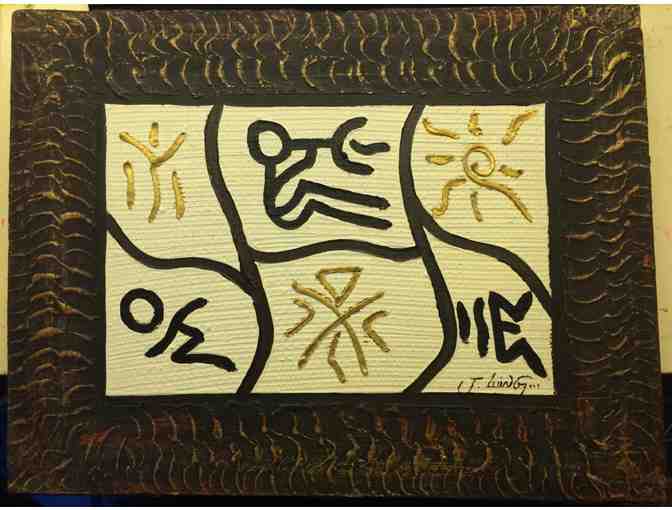Art
2 Pieces of Taino Art by J. Luing
- Item Number
- 242
- Estimated Value
- Priceless
- Sold
- 56 USD to dutch
- Number of Bids
- 5 - Bid History
Item Description
These works are from Puerto Rico. Both pieces are approximately 16 ¼” x 12” x 1 ¼”. They are painted on fabric held together by a wooden frame.
Centuries ago, man left his imprint on caves and rocks during his travels through his natural habitat. These imprints depicted his beliefs, religious rituals, social and political organizations, tools from everyday life, and even extinct plants and animal species. Fortunately, some have lasted until today. Thanks to the Taíno heritage of art, we have insight into our past.
There are two classifications of cave art:
Pictography: cave art represented with painted on colors.
Petrography: cave art engraved or carved on rocks.
The aboriginal Taínos, using plants such as bixa (a concoction of seeds of this plant and vermilion used by the indigenes to daub their bodies), genipap, natural charcoal, animal fat, stone axes, conchs, and yautia juice demonstrated their ability to express their cosmic, mythological beliefs and culture.
The island of Hispanola, known by the aborigines as Babeque or Haiti possesses the largest and richest heritage of cave art in the Caribbean, and probably the most important collection in the Americas.
TainoGallery.com artisans have invested many years of study to insure the authenticity of their work. Each piece is hand made and painted, ensuring that no two are alike.
The entire process of digging the Earth, mixing to the right consistency, rolling, curing, shaping, carving, firing, painting and waxing are done on the premesis.
The symbols inscribed on each object carried a significance for the Taíno people. Below is an overview of the these icons.
Manhattan Country School stores data...
Your support matters, so Manhattan Country School would like to use your information to keep in touch about things that may matter to you. If you choose to hear from Manhattan Country School, we may contact you in the future about our ongoing efforts.
Your privacy is important to us, so Manhattan Country School will keep your personal data secure and Manhattan Country School will not use it for marketing communications which you have not agreed to receive. At any time, you may withdraw consent by emailing Privacy@frontstream.com or by contacting our Privacy Officer. Please see our Privacy Policy found here PrivacyPolicy.


